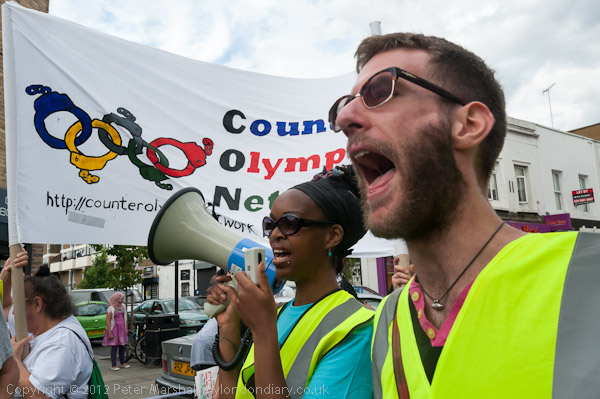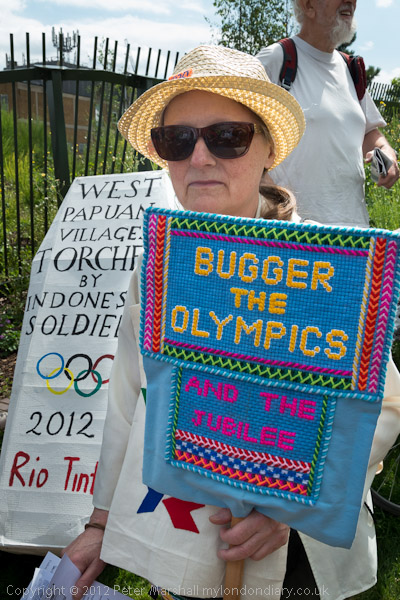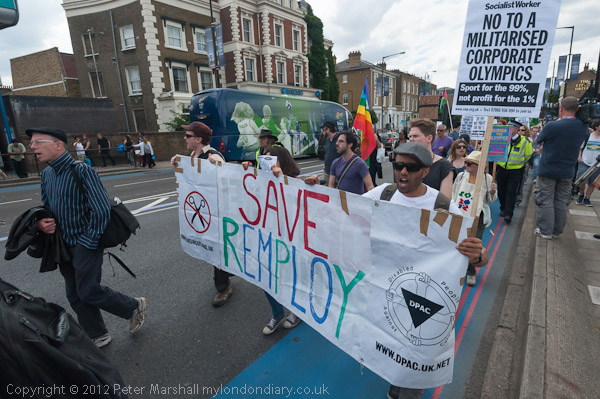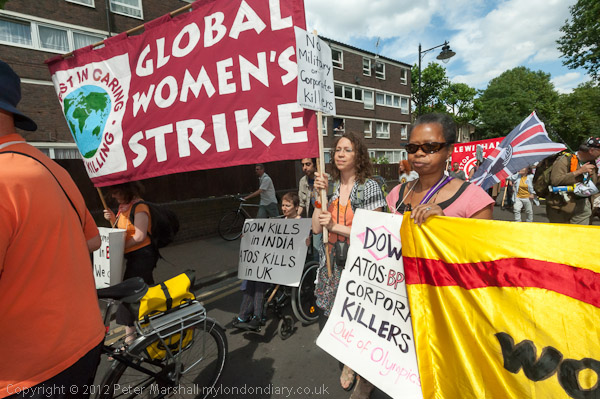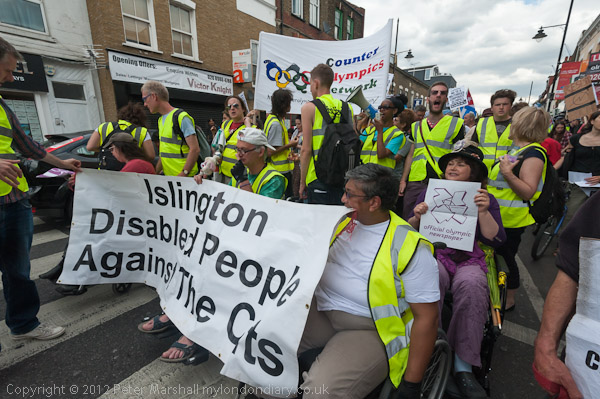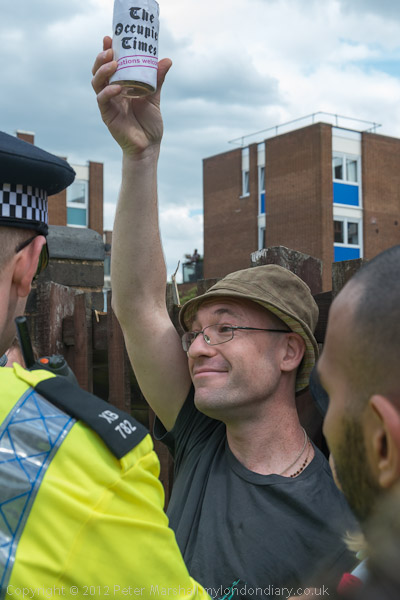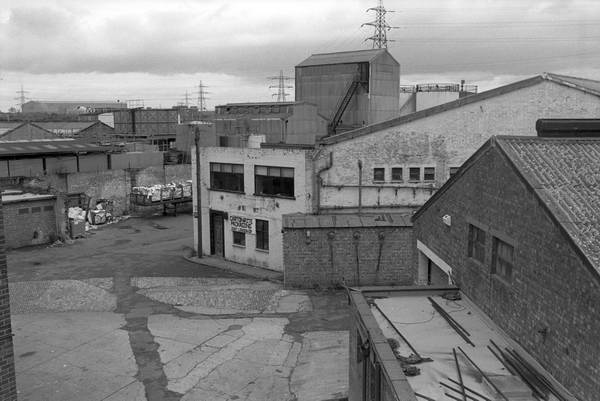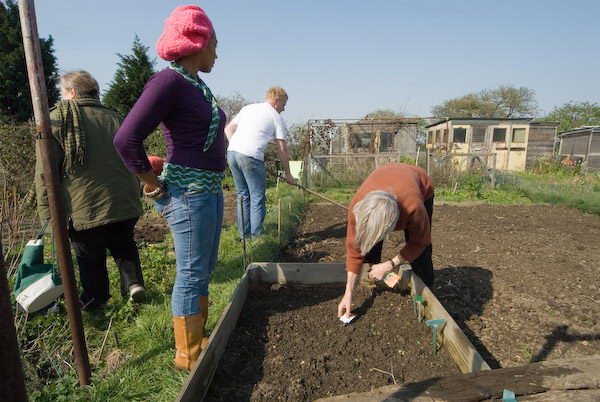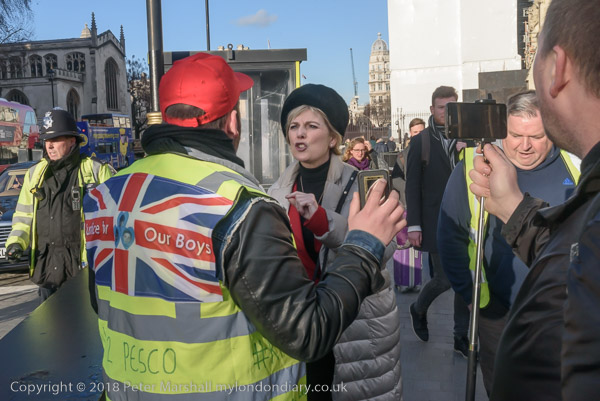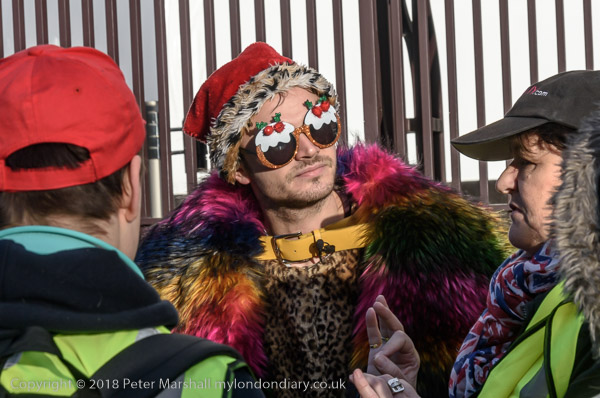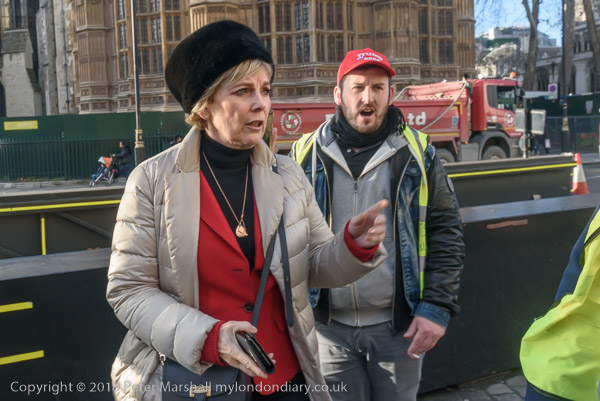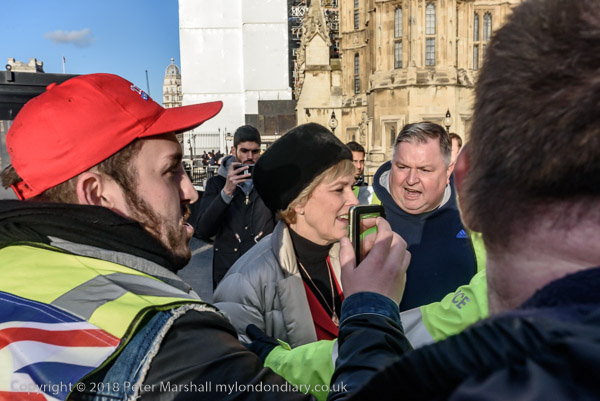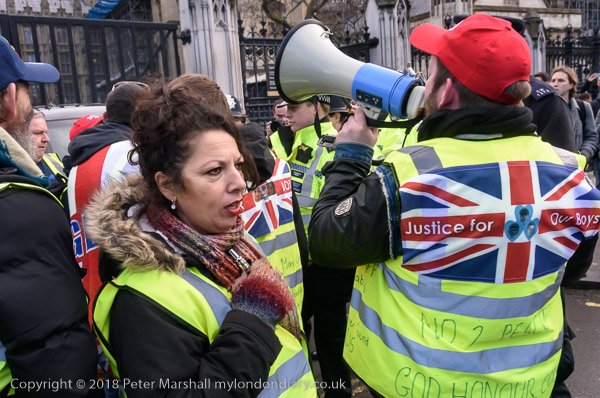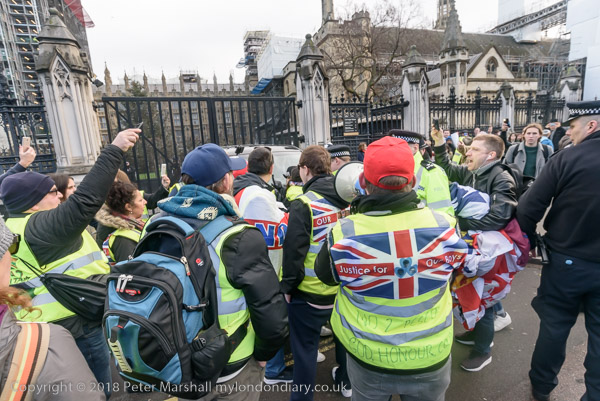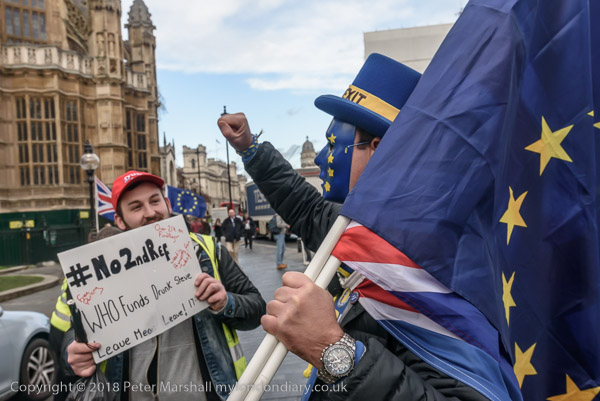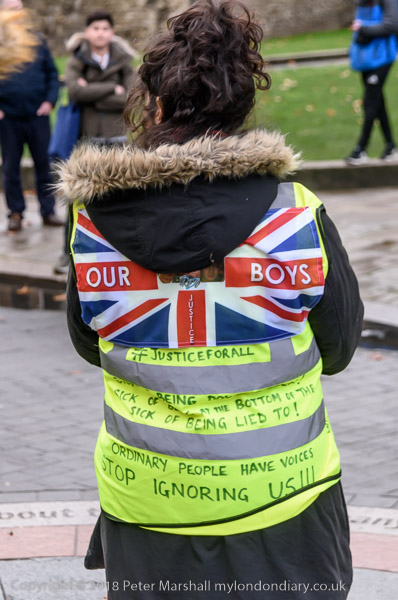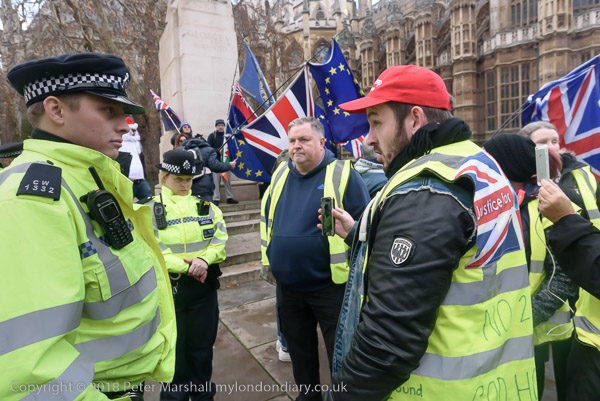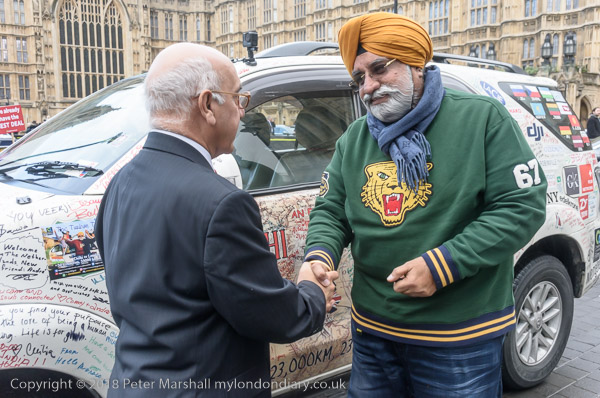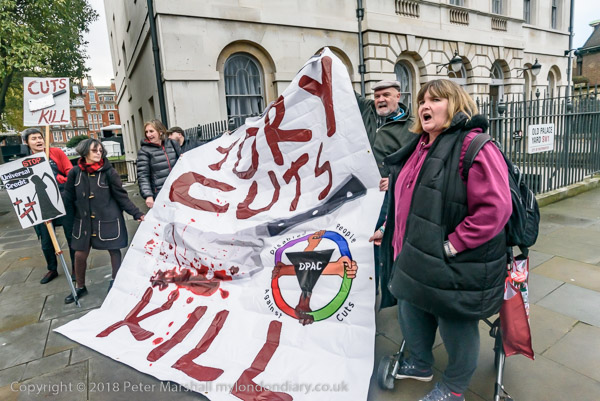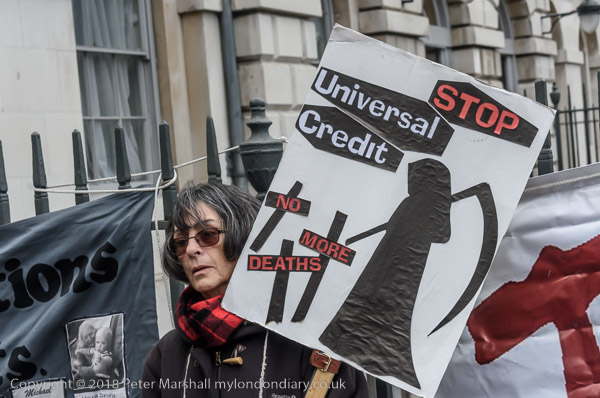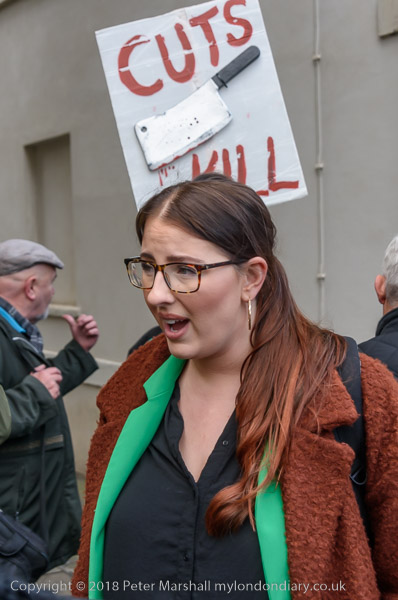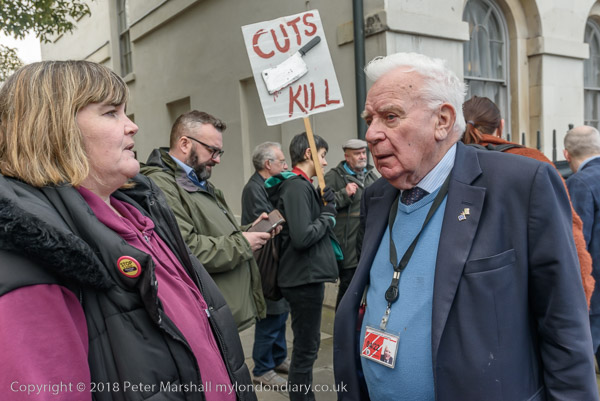Sotheby’s ‘Dignity under the Hammer’ protest: Art is big business, and Sotheby’s is arguably the biggest name in that business. Like all businesses they rely on the services of cleaners, porters and other low paid workers to keep the business running smoothly. But back in 2015 they decided they didn’t want to pay them a proper wage and give them decent conditions of service.
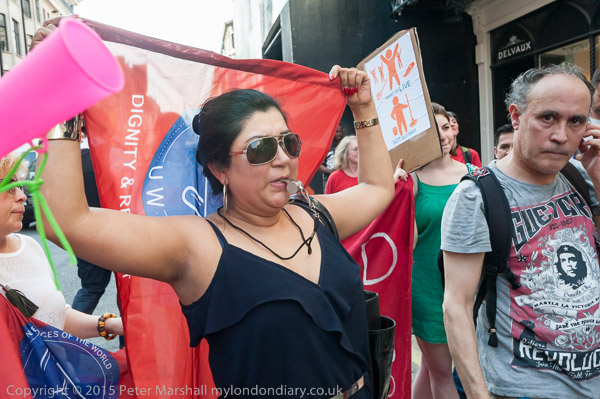
While the protest by the United Voices of the World trade union members and friends was taking place, wealthy art investors were attending and making their bids at a a Contemporary Art Evening Auction including works by Francis Bacon and Andy Warhol. Sotheby’s later announced that the evening “realised £130.4m ($204.7m / €183.9m), Sotheby’s highest-ever total for a sale of Contemporary Art in Europe. Warhol’s only hand-painted one-dollar bill painting sold for £20.9 million, the highest price for any work sold in London this week.”
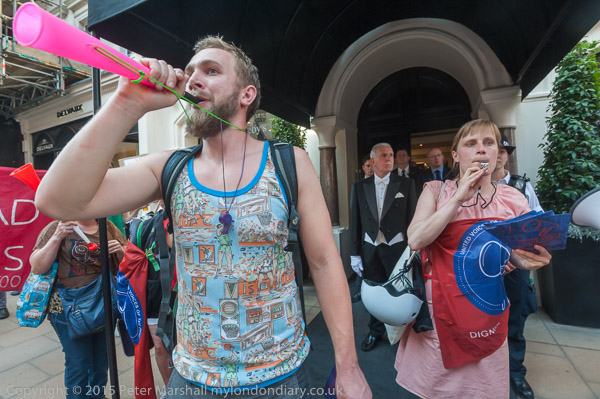
Many wealthy people and institutions which spend lavishly on themselves and their business seem to begrudge paying the low paid workers they depend on a living wage. Perhaps that’s how these people got wealthy in the first place, screwing the peasants and workers.
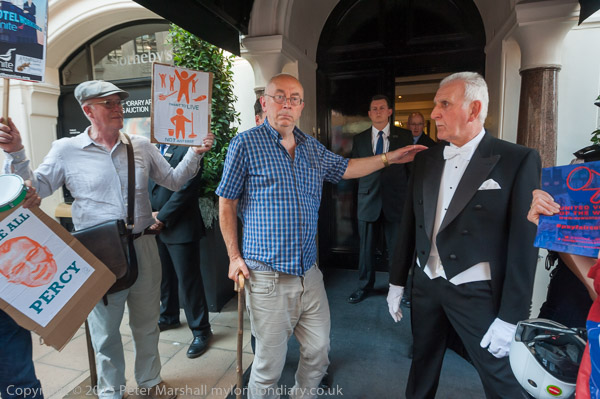
The cleaners at Sotheby’s are not directly employed but are outsourced – so Sotheby’s were able to deny responsibility for the way they were treated. Earlier representations and threats of protests by the workers had resulted in them being promised by their then employers a settlement including the reinstatement of suspended trade union members, contractual sick pay, the backdated payment of the London Living Wage and an end to the use of toxic cleaning products.
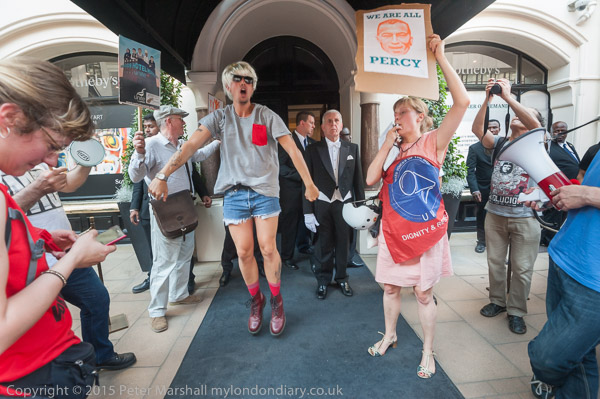
But after this agreement was reached with contractor CCML, Sotheby’s fired the company and brought in new contractors, Servest, who refused to honour the agreement, instead sending a letter to all the workers threatening with sacking if they protested. They also began unfair unfair disciplinary action against one of the union reps, while refusing to investigate his report of threats of violence made to workers by their managers.
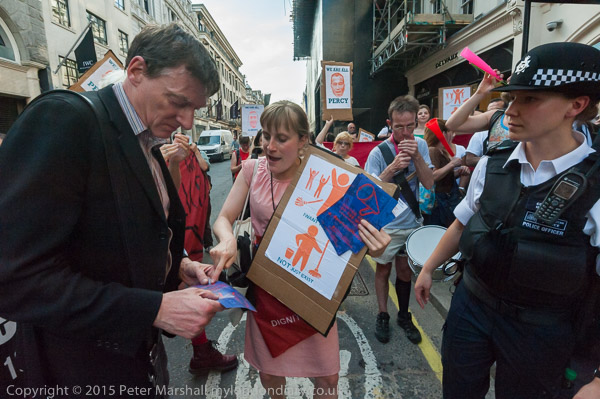
The day after this protest four cleaners reporting for work were stopped and told they were not allowed to enter because they had been at this protest. The United Voices of the World union continued their actions in support with further protests and they were supported in parliament by an Early Day Motion and sponsored by John McDonnell and Jeremy Corbyn.
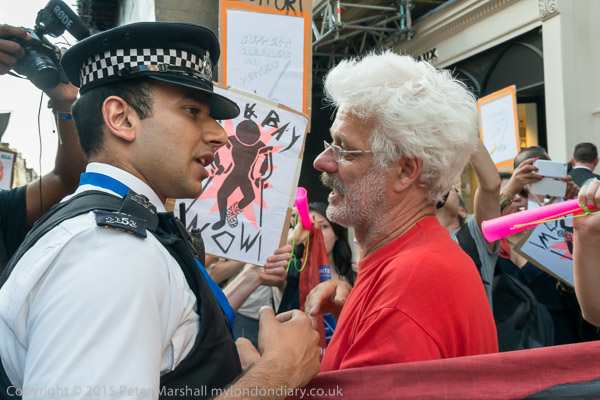
Eventually there was victory for the UVW, and in early 2016 they were able to report that “ALL outsourced workers at Sotheby’s, including cleaners, caterers, porters and security guards would receive both the London Living Wage and contractual (much improved) sick pay.” There is more information on their web site including a video and photographs and links to other news items on the campaign.
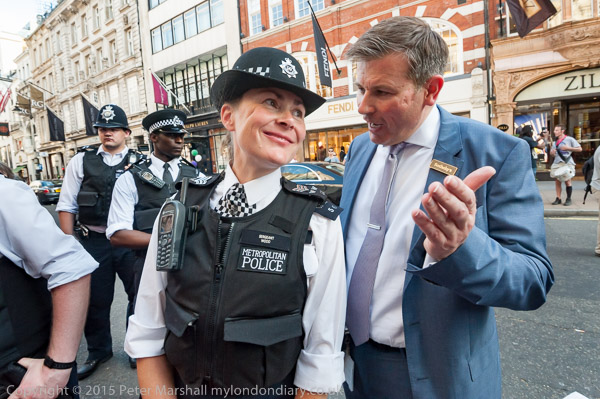
The protest was much enlivened as you can see in some of the pictures by the support of other groups, notably Class War, and you can read an account of this protest on My London Diary (link below) with more comments in the picture captions.
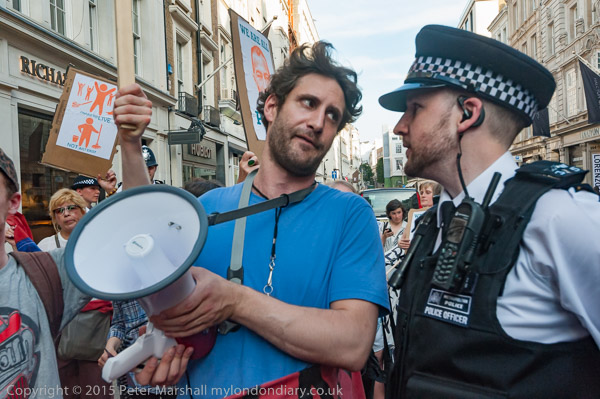
It’s interesting to see the very different attitudes of the police towards the protesters and Sotheby’s staff in the pictures. Eventually after urging from Sotheby’s police brough in reinforcements and tried to clear the protesters well away from the auction entrance, although the protesters had made no attempt to impede those entering, simply offering them fliers about the dispute.
